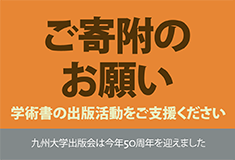目次
Acknowledgments
Introduction:Challenges of Education Research in Central Asia
1.Education Research in Central Asia up to Now and Research Topics
2.Challenges in the Local Community Education Research in Central Asia
3.”Mahalla” in This Study and Purpose of the Study
Chapter 1 Mahalla in Uzbekistan and Historical Change in Their Educational Aspect
1.Previous History of Mahalla in Uzbekistan
2.Mahalla from the End of 19th Century to the Early 20th Century
3.Mahalla during the Period of Russian Empire and Mahalla Policy of Russian Empire
4.Mahalla in the Period of Soviet Union and Mahalla Policy of the Soviet Authority
5.Mahalla in Uzbekistan after Their Independence and Mahalla Restoration Policy of the Uzbekistan Government
Conclusion
Chapter 2 Mahalla Structure and Learning for Adults after Independence
1.Systemization of Mahalla by the Nation
2.Activities of Mahalla as the End Institution of the Government
3.Community Education Activities by Mahalla Residents and Female Support
Conclusion: How the Adult Learning in Mahalla Can Be Understood
Chapter 3 The Socialization and Cultural Succession of Children in Mahallas
1.Children’s Life in Uzbekistan’s Mahallas
2.Children’s Rites of Passage and Islam
3.Becoming Socialized through Ceremonies and Rituals Conducted at Mahallas
Conclusion
Chapter 4 Mahalla in School Education
1.School System of Uzbekistan and Educational Reform after the Independence
2.The Political and Social Background of Implementing Mahalla in School Education: “From a Strong State to a Strong Civil Society”, Mahalla as a Social Foundation
3.Mahalla’s Image in School Education and Principles
4.The Actual Situation and Significance of Implementation of Mahalla in School Education
Conclusion
Chapter 5 Raising “Citizen” Awareness in Uzbekistan through a Combined Effort between Mahallas and Schools
1.Fostering “Citizen” Awareness in Young People after the Independence of Uzbekistan
2.Fostering the Social Awareness of “Citizenship” in School Education in Uzbekistan
3.Fostering a Social Awareness of “Citizenship” by Mahallas
Conclusion
Chapter 6 Youth Education through the Cooperative Activities of Institutions: Examples from Mahalla, NGOs, and International Organizations
1.Position of NGOs and Youth Organizations in Uzbekistan and Their Activities
2.Cooperative Activities of Each Institutions and Mahalla
3.Image of Local Community for Young People in Uzbekistan and the Activities of Each Institution: Based on a Survey from Multiple Universities
Conclusion
Final Chapter:Educational Role of Mahalla in Uzbekistan
1.Relationship of the Educational Role in Each Institution
2.A Community That Educates
Conclusion Future Views and Challenges
Selected Bibliography

